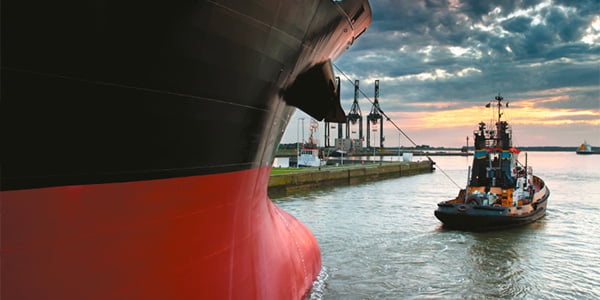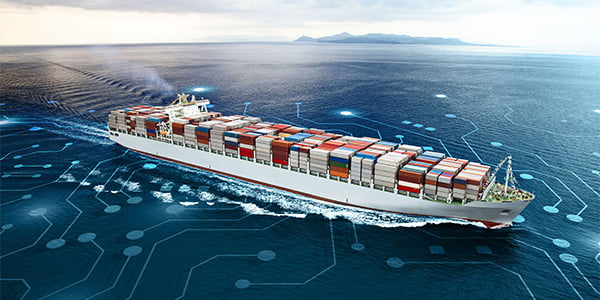Marine IoT
Harnessing Connected Sensors and Analytics for Smarter, Safer Vessel Operations
Get a quote todayDefinition & Benefits
Marine IoT (Internet of Things) refers to the deployment of interconnected sensors, gateways, and analytics platforms aboard vessels to monitor machinery, environmental conditions, and operational parameters in real time. Key benefits include:
- Operational Efficiency: Continuous visibility into engine performance, fuel consumption, and route optimisation drives up to 20% fuel savings through data-driven adjustments.
- Predictive Maintenance: Early anomaly detection in critical systems—via vibration, temperature, and pressure sensors—reduces unplanned downtime by as much as 40%.
- Safety & Compliance: Automated monitoring of ballast-water quality, emissions, and hazard sensors supports regulatory adherence (IMO 2020 sulfur cap, ballast-water conventions) and enhances crew safety.
- Crew Welfare & Cargo Integrity: Wearables for crew safety alerts and real-time cargo‐hold condition tracking (temperature, humidity) ensure both personnel well-being and cargo quality.

Installation & Integration
Site Survey & Design – Assess optimal sensor locations (engine room, hull, cargo holds) and plan antenna/gateway placement for clear connectivity.
Power & Cabling – Use PoE or battery-powered options for remote sensors; marine-rated cabling and connectors ensure corrosion resistance.
Sensor & Gateway Deployment – Install marine-grade sensors (NMEA/CAN-bus, analogue inputs) and robust IoT gateways in tamper-resistant enclosures.
Sensor & Gateway Deployment – Install marine-grade sensors (NMEA/CAN-bus, analogue inputs) and robust IoT gateways in tamper-resistant enclosures.
Commissioning & Training – Validate end-to-end data flows, calibrate sensors, and train crew and shoreside teams on dashboards and alert management.
Technical Performance
Data Collection & Management
- Sensor Coverage: Engine metrics (RPM, fuel flow, temperature), structural health (strain, vibration), environmental (ballast-water quality, emissions), and crew wearables.
- Edge Processing: Local filtering, aggregation, and anomaly detection reduce satellite bandwidth needs, buffering data during connectivity gaps.
- Cloud Analytics: Scalable platforms ingest filtered data for machine learning predictive insights, dashboarding, and automated report generation.
Reliability & Accuracy
- Redundancy: Dual communication paths (cellular + satellite) and redundant gateways ensure ≥ 99% data availability in commercial lanes.
- Data Integrity: Regular sensor calibration, error-checking algorithms, and secure transmission (AES-256 VPN) maintain high data accuracy under harsh marine conditions.
Cost Expectations
Upfront and ongoing costs vary by vessel size, sensor count, and data-plan bandwidth. Rather than generic rates, we recommend getting a tailored quote that aligns hardware, installation, and service costs with your specific operational profile.
Ensure the optimal balance between vessel performance, predictive insights, and cost.
Use Cases
- Fleet-wide Monitoring: Centralised dashboards track vessel positions, fuel usage, and maintenance KPIs in real-time.
- Offshore Energy: Remote sensor networks on rigs and support vessels enable condition-based maintenance of critical equipment.
- Cold-Chain Logistics: Continuous temperature and humidity tracking inside refrigerated holds for perishables and pharmaceuticals.
- Yacht Management: Owner apps provide remote visibility of bilge levels, battery status, and security alerts.
- Environmental Compliance: Automated ballast-water quality reporting and emissions logging support audit-ready records.

Regulatory & Compliancce
Environmental Regulations: Real-time monitoring supports IMO 2020 sulfur cap, MARPOL Annex IV ballast-water treatment, and MRV emissions reporting.
Standards & Certifications: Marine-grade hardware complies with IEC 60945; data security meets ISO 27001 and NIS 2 requirements.
Cybersecurity: Network segmentation, intrusion-detection systems, and strict access controls safeguard both IT and OT environments.
FAQS
What are the power and maintenance requirements for Marine IoT sensors?
Marine sensors may be powered via PoE from the IoT gateway or by long-life batteries; routine maintenance includes annual calibration and seal inspections to ensure accuracy in corrosive marine environments.
How do Marine IoT gateways integrate with legacy onboard systems?
Gateways use standardised protocols (NMEA 0183/2000, Modbus, CAN) and protocol-translation modules to interface with older OT equipment, enabling seamless data flow without requiring full system replacement.
How is data managed when connectivity is intermittent?
Edge processing capabilities buffer and preprocess data locally during outages, automatically synchronising with cloud platforms once satellite or cellular links are restored, ensuring no data loss.
Can the IoT solution be scaled across a multi-vessel fleet?
Yes—cloud-native platforms support fleet provisioning, allowing rapid onboarding of new vessels, centralised device management, and uniform dashboarding for consistent KPI tracking across your entire fleet.